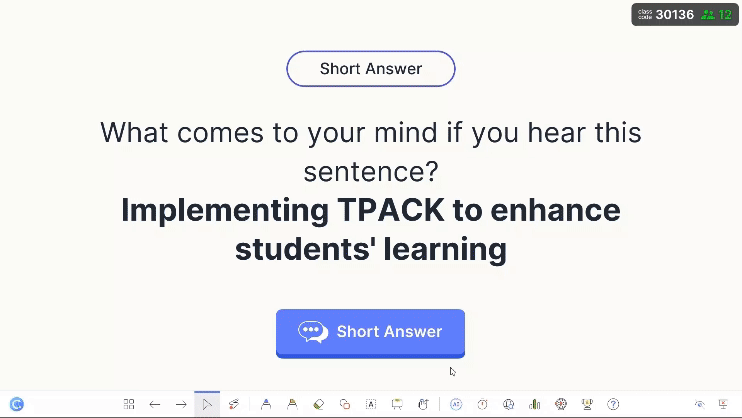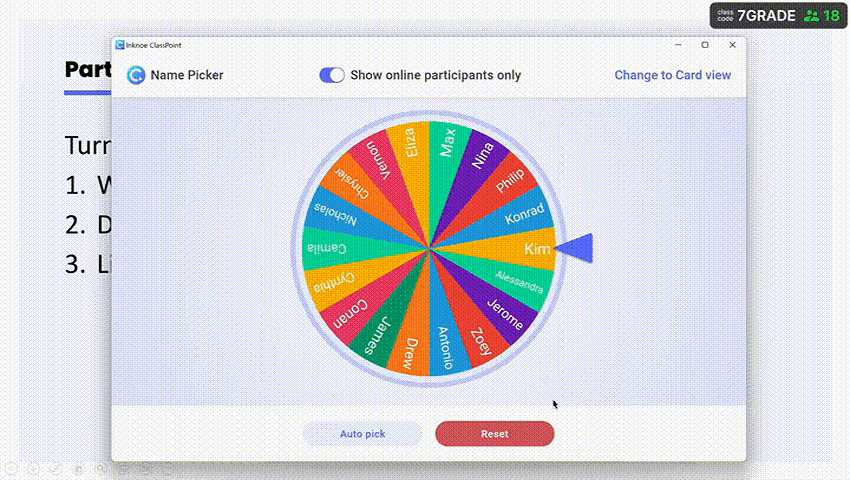Whether at school or in our personal lives, some things are within and outside our control. For example, take the weather and your mood. You can’t control whether it rains or shines, but you can choose how you respond to it. You might spend the day feeling gloomy because of the rain or you could take advantage of the time indoors to be productive and finish your homework. This mindset reflects the essence of the circle of control.
First introduced by Stephen Covey in his 1989 book The 7 Habits of Highly Effective People, the circle of control refers to the idea that we should focus our energy on the things we can influence rather than those we can’t.
How the Circle of Control Shapes Success in School
Understanding the circle of control can make a real difference for students. While you can’t always change how hard a test is or how fast the teacher talks, you can choose how much effort you put in, how you act, and how you handle challenges thrown your way.
Some teachers use this idea to help students remain calm and focused when things don’t go their way. For example, if something unexpected happens, like a loud noise or another student is being distracting, it’s easy to get upset. But instead of reacting impulsively, students are encouraged to take a moment and ask themselves: “Is this something I can control?”
To help with this, you can split things into two groups:
- What I can control – my behavior, my attitude, my choices
- What I can’t control – other people, sudden changes, rules or routines
Such thinking helps your students slow down, take time to pause, and make better decisions. Many students find that using the circle of control helps them feel more in charge of their own learning. With practice, they use this skill without constant reminders or visual cues. They start seeing that success in school doesn’t come from everything going perfectly, but rather from how you choose to respond when things get tough.
By focusing on what they can do, students build confidence, improve their grades, and develop important life skills like responsibility and self-control. Overall, it’s about doing better in class and learning how to handle life. Wondering what that looks like? Below are some activities that offer practical ways to explore and implement the circle of control in your classroom.
| Activity | What Students Do | Purpose | Suggested Tools or Formats |
|---|---|---|---|
| Identify Real-Life Examples | Review example situations (e.g., the weather, homework, test questions) and decide if they are in their control or not. | Introduce the concept and help students begin distinguishing between what’s within their power and what isn’t. | PowerPoint slide with ClassPoint’s Short Answer or printed worksheet |
| Reflect and Share Their Own | Think of a recent challenge or worry and share whether it was in or out of their control. Can be done individually, in pairs, or as a class. | Deepen understanding by making the idea personal and relevant to their lived experience. | Name picker wheel, group discussion, Think-Pair-Share |
| Apply It to Emotional Situations | When students are feeling overwhelmed, walk them through identifying what they can and can’t control in the moment. Then, help them plan what they can do next. | Reinforce the concept as a real coping strategy, not just a classroom idea. Build emotional resilience and problem-solving skills. | One-on-one check-in, visual circle of control diagram, journaling activity |
Give Students Real-Life Examples
To many beginners, the idea of a circle of control can feel unfamiliar. But like any new concept, it becomes clearer with practice. That’s where examples come in.
Start by presenting a few scenarios and asking students to decide: Is this within your control or outside of it?
If you’re using PowerPoint in class, you can make this activity more interactive with tools like ClassPoint. With Short Answer activities and a scannable QR code, students can respond in real-time from their own devices, making participation easy and accessible.
Here are some examples to try:
- The weather
- Whether or not they finish their homework
- The questions that appear on a test
- How do they respond when someone is unkind
- The health of their friends or family
Getting students to reflect on these examples helps them build the habit of focusing on what they can control. In the long run, this mindset becomes a powerful coping tool in the classroom and beyond.

Get Students to Reflect and Share
Starting with sample scenarios is helpful, but the real learning happens when students begin generating their own. Once they’ve grasped the idea of the circle of control, invite them to come up with examples from their lives. What’s something they’ve worried about recently? Was it something within their control or not?
This kind of activity encourages reflection, helps personalize the concept, and builds emotional awareness. It’s especially useful when students are facing stressful situations or changes, giving them a framework to sort through their thoughts.
Looking to bring emotional intelligence in your classroom? Here are 10 Practical Strategies for Implementing a Social-Emotional Learning Curriculum.
To bring this activity to life, try using a name picker wheel. It’s a playful yet fair way to bring more voices into the conversation. Instead of choosing students yourself, let the wheel randomly select someone to share an example. This removes bias, increases participation, and gives shy students a chance to contribute without the spotlight feeling too intense.
Having issues with student engagement? Here are Effective Questioning Techniques to Increase Student Participation.
In addition to randomly calling on students, you can group them into Think-Pair-Share sessions to encourage collaboration and build camaraderie. Chances are, many of them are already in the same boat when it comes to academic struggles and shared experiences.
Over time, these student-driven examples can become an ongoing class anchor, helping everyone develop stronger self-awareness and resilience.

Help Students Apply It Themselves
Even when students understand the concept of the circle of control, they’re still human. Stress, anxiety, and frustration can take over, especially when they’re juggling school, family, and social pressures. That’s where your support makes a real difference.
Overwhelmed by academic responsibilties? Explore this list for practical tips on helping students manage exam stress.
When a student feels overwhelmed, the first thing they need is someone who listens. Start by checking in with them. Then, guide them toward self-regulation by helping them name their emotions and pause before reacting. From there, you can introduce the circle of control as a tool to help them make sense of the situation.
Check out our 12 Simple SEL Check In Activities That Help Support Student Well-Being.
Ask them to think through which parts of the problem are within their control and which are not. This can be a verbal conversation, or you can offer a simple visual that they can fill out on their own. Some students may prefer doing this quietly at first, such as by writing it down in their journal, before discussing it with you. Others may benefit more from walking through it with someone by their side. Trust your read of the moment.
Once they’ve sorted it out, help them take action. What steps can they take based on what is in their control? And just as importantly, what can they choose to let go of? This reflection, paired with a clear path forward, can go a long way in helping them feel grounded again.
In a Nutshell: Knowing What’s In Your Control Is a Superpower
A lot of people spend their energy stressing over things going wrong or not going as planned. But the truth is, no matter how hard we try, some things will always be outside of our control. That’s just part of life. The real strength lies in being able to tell the difference and focus on what’s actually in your hands.
When students learn this, something shifts. Instead of feeling stuck or overwhelmed, they begin thinking clearly about what they can do next. They learn to take responsibility for their actions, their mindset, and their effort without carrying the weight of everything else.
But this doesn’t mean ignoring challenges. It just means approaching them with a clearer head and a stronger sense of direction. Ultimately, there’s power in letting go of what you can’t change and doubling down on what you have control over. And that’s a mindset that will serve students not just in school, but throughout their lives.
FAQs
What is the circle of control in education?
The circle of control in education refers to the idea that students should focus on what they can control—like their effort, attitude, and behavior—rather than external factors like others’ actions or unexpected events. It’s a mindset that promotes resilience and personal responsibility.
Why is the circle of control important for students?
Understanding the circle of control helps students manage stress, stay focused, and make better decisions. By recognizing what’s in their hands and letting go of what isn’t, they build self-awareness and learn how to handle challenges with a clear, calm mindset.
How can teachers teach the circle of control in the classroom?
Teachers can introduce the circle of control through activities like scenario sorting, journaling, or reflection prompts. Tools like ClassPoint can make it interactive by letting students respond in real time. Visual aids and group discussions also help students apply the concept in real-life situations.
What are examples of things inside and outside a student’s control?
Examples of what students can control include their behavior, study habits, and how they treat others. Things outside their control include the weather, test questions, or someone else’s behavior. Teaching students to separate the two helps reduce anxiety and improve focus.
How does the circle of control support student success?
By focusing on what they can control, students develop healthier coping strategies, stay motivated, and take ownership of their learning. The circle of control promotes a growth mindset and prepares students to navigate both academic and personal challenges more effectively.

